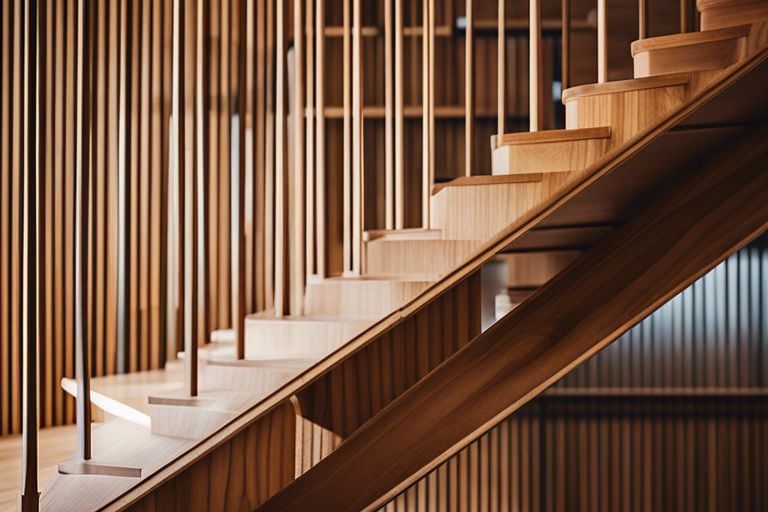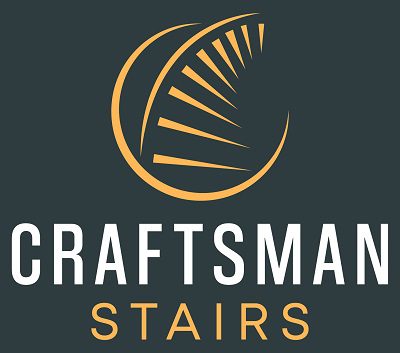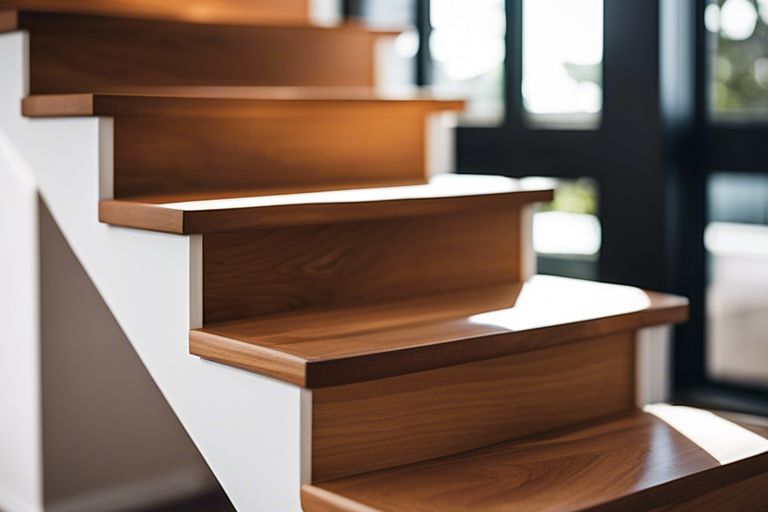Over the years, timber staircases have remained a popular choice for homes in Australia due to their timeless appeal and durability. In the matter of selecting the right timber for your staircase, there are a variety of options available that offer both aesthetic beauty and structural reliability. In this comprehensive guide, we will explore the different types of timber commonly used for staircases in Australia, highlighting their unique characteristics and benefits to help you make an informed decision for your home.
Key Takeaways:
- Hardwoods: Hardwoods such as Blackbutt and Spotted Gum are popular choices for their durability and natural beauty.
- Softwoods: Softwoods like Pine are more budget-friendly options for staircase construction.
- Engineered Wood: Engineered wood like Laminate or Engineered Oak provides a more stable and cost-effective alternative to solid timber.
- Tasmanian Oak: Tasmanian Oak is a versatile timber that is commonly used for stair treads, offering a clean and contemporary look.
- Stringybark: Stringybark is a durable option that is well-suited for both indoor and outdoor staircases due to its natural resistance to decay.
Ten Facts About Types of Timber For Staircases in Australia
- Oak is a popular choice for staircases in Australia due to its durability and timeless appearance.
- Merbau, a hardwood imported from Southeast Asia, is known for its durability and weather resistance, making it a suitable choice for outdoor staircases.
- Blackbutt, a hardwood native to Australia, is favoured for its strength and attractive pale brown colour.
- Spotted Gum, another Australian hardwood, is valued for its strength, durability, and natural resistance to termites.
- Pine is a commonly used softwood for staircases, offering affordability and ease of workability, although not as durable as hardwoods.
- Jarrah, a hardwood native to Western Australia, is prized for its rich red colour and durability.
- Ironbark, another Australian hardwood, is extremely durable but can have inconsistencies in grain.
- Treated softwoods like pine and poplar are often used for commercial and industrial staircases, balancing cost and durability.
- Hardwoods like oak and maple are also suitable for indoor staircases, providing strength and durability.
- Australian hardwoods like eucalyptus, Tasmanian oak, and blackbutt offer a range of colours and characteristics, suitable for various staircase designs.

Hardwood Options for Staircases
Spotted Gum
For a durable and visually striking option for your staircase in Australia, consider using Spotted Gum timber. With its stunning grain patterns and a range of colours from pale greys to rich browns, Spotted Gum adds an aesthetic appeal to any staircase. This hardwood is known for its strength and resilience, making it an ideal choice for high-traffic areas like staircases.
Blackbutt
Blackbutt is another popular choice for staircases in Australia. This versatile timber offers a clean, contemporary look with its pale brown hue and subtle grain patterns. Plus, Blackbutt is known for its durability and resistance to wear and tear, making it a practical option for busy households.
Blackbutt timber is also sourced sustainably in Australia, making it an eco-friendly choice for homeowners looking to reduce their environmental impact.
Jarrah
Staircases made from Jarrah timber exude warmth and sophistication. This rich, deep red hardwood is prized for its beauty and durability, making it a popular choice for staircase construction. Understanding that Jarrah is a dense hardwood with excellent natural resistance to termites and decay, you can rest assured that your staircase will stand the test of time.
Tasmanian Oak
With Tasmanian Oak, you get a versatile and cost-effective option for your staircase that doesn’t compromise on quality. This hardwood features a light, neutral colour palette with subtle grain patterns, making it easy to complement various interior styles. The Tasmanian Oak is also known for its excellent staining capabilities, allowing you to customize the look of your staircase to suit your preferences.
The availability of Tasmanian Oak in large, knot-free sections makes it a practical choice for staircase construction, ensuring a smooth and uniform finish.
Softwood Choices for Staircases
Radiata Pine
When it comes to selecting timber for staircases in Australia, Radiata Pine is a popular choice due to its affordability and versatility. This softwood is easy to work with and provides a clean, uniform appearance when sanded and finished.
Hoop Pine
For staircases that require a more elegant and refined look, Hoop Pine is a fantastic option. This softwood features a straight grain and a warm, honey hue that adds a touch of sophistication to any staircase design. Additionally, Hoop Pine is known for its durability, making it a practical choice for high-traffic areas.
Plus, Hoop Pine is a sustainable choice as it is harvested from plantations in Australia. This eco-friendly option makes it a popular choice among homeowners who value sustainability in their building materials.
Cedar
Pine timber is another excellent softwood choice for staircases in Australia. Cedar’s natural beauty and rich, reddish-brown colour add warmth and character to any staircase design. It is also known for its natural resistance to decay and insects, making it a durable and long-lasting choice for staircases.
It is crucial to note that Cedar is a softwood that requires regular maintenance to preserve its beauty and extend its lifespan. However, with proper care, Cedar staircases can remain a stunning centrepiece in your home for decades to come.
Engineered Wood Alternatives
Laminated Veneer Lumber (LVL)
Laminated Veneer Lumber (LVL) is a popular choice for staircase construction in Australia. It is made by bonding multiple layers of thin wood veneers together with adhesives to create a strong and durable material. LVL offers excellent load-bearing capacity and dimensional stability, making it ideal for use in staircases where strength is crucial. Its uniform composition ensures consistent quality and performance, making it a reliable choice for homeowners looking for a cost-effective engineered wood option.
Medium-Density Fibreboard (MDF)
Alternatives to solid timber, such as Medium-Density Fibreboard (MDF), are gaining popularity for staircase construction. MDF is made by compressing wood fibres with resin under high pressure to create a dense and smooth sheet material. While not as strong as solid timber, MDF offers a uniform texture that can be easily painted or stained to match any décor. Its affordability and versatility make it a practical choice for homeowners looking for a budget-friendly staircase solution.
Wood alternatives like Medium-Density Fibreboard (MDF) offer a sustainable solution for staircase construction by using recycled wood fibres and waste materials. While MDF may not have the natural beauty and character of solid timber, its consistent quality and smooth finish make it a popular choice for modern staircase designs. It is necessary to consider the specific requirements of your staircase project to determine if MDF is the right engineered wood alternative for your needs.

Considerations for Timber Selection
Durability and Hardness
Hardness is a necessary factor to consider when selecting timber for staircases in Australia. Harder timbers such as Ironbark or Spotted Gum are ideal choices as they are more resistant to wear and tear, ensuring the longevity of your staircase.
Aesthetic Appeal
Durability is crucial, but so is the aesthetic appeal of the timber. The natural beauty of timber can enhance the overall look of your staircase, adding warmth and character to your space. Consider the grain patterns, colour variations, and finishes to ensure the timber complements your interior design.
Moisture Resistance and Treatment
Moisture can be a significant factor in the deterioration of timber staircases. Choosing a timber with high moisture resistance, such as Blackbutt or Merbau, can help prevent issues such as warping or rotting. Additionally, treating the timber with suitable coatings or finishes can further enhance its moisture resistance.
Cost and Availability
For cost-effective options, consider timbers like Tasmanian Oak or Radiata Pine, which are readily available in Australia. However, keep in mind that availability may vary depending on your location. It is necessary to balance cost with quality to ensure you are getting timber that meets both your budget and performance requirements.
Final Words
Following this exploration of different timber options for staircases in Australia, it is evident that a variety of factors such as durability, appearance, and cost need to be considered when selecting the type of timber for your staircase. Each timber species offers unique qualities that can enhance the aesthetics and functionality of your staircase. To investigate deeper into the selection process, you can find further insights into What Species Will Work Best For Your Timber Staircase. By making an informed decision based on your preferences and requirements, you will be able to create a staircase that not only complements your home but also stands the test of time.
FAQ
Q: What are the common types of timber used for staircases in Australia?
A: The common types of timber used for staircases in Australia include Jarrah, Blackbutt, Spotted Gum, Victorian Ash, and Tallowwood.
Q: Why is timber a popular choice for staircases in Australia?
A: Timber is a popular choice for staircases in Australia due to its natural beauty, durability, versatility, and ability to complement various design styles.
Q: What should be considered when choosing timber for a staircase?
A: When choosing timber for a staircase, factors such as hardness, grain pattern, colour, finish, and cost should be considered to ensure it meets both aesthetic and functional requirements.
Q: How can timber staircases be maintained in Australia’s climate?
A: To maintain timber staircases in Australia’s climate, regular cleaning, sealing, and protecting from direct sunlight and moisture are imperative to prevent warping, cracking, or fading.
Q: Are there sustainability considerations when using timber for staircases in Australia?
A: Yes, sustainability considerations are important when using timber for staircases in Australia. Opting for timber from responsibly managed forests or certified sustainable sources helps reduce environmental impact and supports conservation efforts.
Advice & Actionable Tips
- Consider the aesthetic appeal, durability, and cost when choosing timber for your staircase.
- Consult with a local timber supplier to determine the best timber species for your specific needs.
- Ensure proper installation and maintenance to prolong the lifespan of your timber staircase.
🌐 Article Sources & Resources
- Architecture & Design: Presents ideas and designs for wooden stairs, including timber options.

